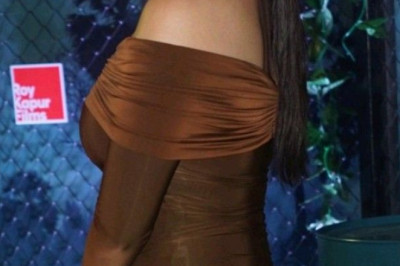views
According to the latest market analysis by DataIntelo, the Chiffon Market is expected to grow significantly, reaching a value of USD 7.1 billion by 2032, up from USD 4.3 billion in 2023. The market is projected to expand at a CAGR of 5.5% during the forecast period, driven by increasing global fashion trends and consumer preferences for lightweight, breathable fabrics.
Chiffon, known for its sheer, flowing texture and luxurious appeal, continues to be a staple in the textile industry. It finds extensive usage in fashion, home décor, and event decoration. The growth is largely attributed to the rising demand for elegant and comfortable apparel in both casual and formal wear across regions.
👉 Explore the complete market insights here: Chiffon Market
Key Market Drivers
The chiffon market’s momentum is influenced by multiple factors, with fashion industry expansion playing a primary role. As global fashion trends evolve, chiffon remains a top choice among designers for creating flowing gowns, scarves, dresses, and blouses. The fabric’s versatility adds to its widespread application in bridal wear and haute couture.
Another critical driver is the increasing popularity of sustainable and synthetic textiles. Manufacturers are blending chiffon with eco-friendly fibers to appeal to environmentally conscious consumers. Additionally, the rising preference for lightweight, breathable fabrics in warm climates fuels the market demand, especially in Asia-Pacific and the Middle East.
👉 Gain firsthand data with our in-depth Request a Sample Report
Market Restraints
Despite its positive outlook, the chiffon market faces some restraints. One of the prominent challenges is the delicate nature of the fabric, which requires careful handling and maintenance. Consumers often avoid chiffon products due to their perceived fragility, limiting its use in everyday wear.
Also, the availability of low-cost alternatives like polyester blends and synthetic georgette impacts chiffon’s market share. Price sensitivity in emerging economies makes consumers lean toward more affordable options, posing a threat to pure chiffon product demand.
Opportunities on the Horizon
The chiffon market presents exciting opportunities, especially with the rising demand for occasion-specific clothing. From weddings to festive celebrations, the global appetite for elegant attire is increasing, offering room for innovation in chiffon designs and dyeing techniques.
Moreover, the expansion of e-commerce platforms and digital fashion retail creates new growth avenues. Online shopping for clothing and fabrics is booming, and chiffon garments are gaining visibility due to their aesthetic appeal and photogenic quality.
- 👗 Surging demand for wedding and evening wear
- 🌱 Eco-conscious chiffon innovations gaining traction
- 🌍 Expansion of online fashion retail in emerging markets
- 💡 Design flexibility attracting creative experimentation
Segmentation Overview
The Chiffon Market is segmented based on material type, application, and region. By material, the market includes silk chiffon, polyester chiffon, and nylon chiffon. Polyester chiffon dominates the market due to its affordability and durability, while silk chiffon leads in luxury and premium apparel segments.
In terms of application, the market spans across apparel, home décor, and event decoration. Apparel remains the dominant sector, particularly in women’s clothing. Meanwhile, chiffon curtains, drapes, and table covers are trending in the home décor segment for their elegant appeal and flowy aesthetic.
👉 Dive deeper into market dynamics—View Full Report
Regional Landscape
The Asia-Pacific region holds the largest share in the chiffon market, accounting for over 45% of global revenue in 2023. Countries like India, China, and Bangladesh are major production hubs, leveraging their textile infrastructure and labor cost advantages. Additionally, consumer preference for light fabrics in tropical climates supports consistent demand.
Europe follows as a major market, especially in the high-fashion segment. Designers across France, Italy, and the UK frequently incorporate chiffon into luxury collections. North America is also seeing a steady rise in chiffon adoption, particularly in bridal and formal wear categories.
The Middle East and Africa are emerging as high-growth regions due to increasing disposable income and a growing inclination toward luxury fashion. The traditional and ceremonial clothing sectors significantly contribute to chiffon sales in these areas.
👉 Need regional customization? Enquire Before Buying
Competitive Analysis
The chiffon market is moderately fragmented, with a mix of global and regional manufacturers. Leading textile producers are focusing on product innovation, offering blends that improve strength while maintaining the fabric’s signature softness and transparency.
Additionally, digital textile printing is a growing trend, enabling personalized chiffon garments for individual buyers. As fashion turns toward unique and limited-edition collections, customization is emerging as a valuable differentiator.
Key Trends:
- 🧵 Increased use of digital printing on chiffon
- 🛍️ Rising popularity of made-to-order fashion
- 📦 E-commerce boosting direct-to-consumer chiffon brands
👉 Ready to make data-backed decisions? Check Out the Report
Conclusion
The chiffon market is poised for steady growth over the next decade, backed by fashion innovations, rising demand for elegant textiles, and expanding retail networks. As sustainability, personalization, and comfort continue to shape consumer preferences, chiffon is expected to hold its place as a timeless and adaptable fabric.




















Comments
0 comment